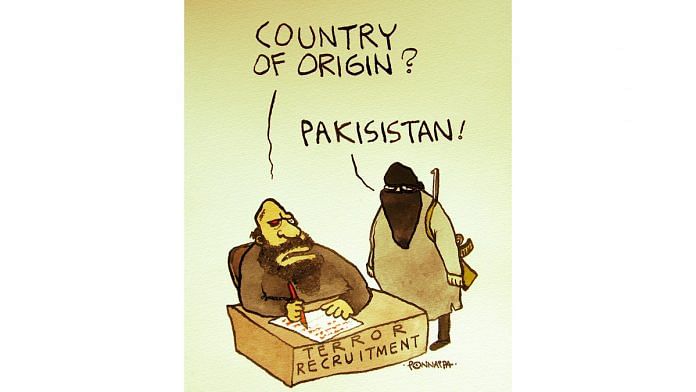The selected cartoons appeared first in other publications, either in print or online, or on social media, and are credited appropriately.
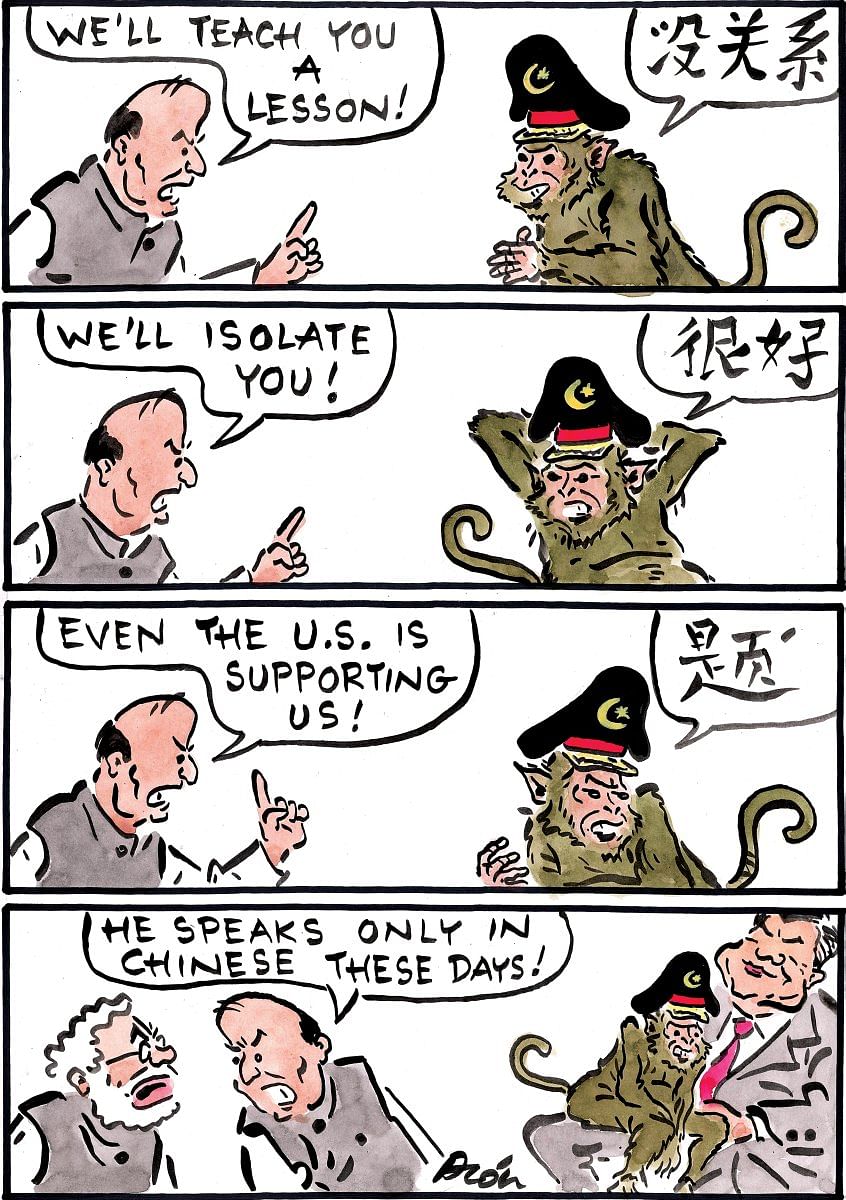
In the aftermath of the Pulwama massacre, Alok Nirantar shows Union Home Minister Rajnath Singh threatening a monkey in a Pakistan Army general’s uniform. The monkey only speaks Chinese and is sitting on a Chinese man’s lap, with the allusion being to the strengthening ties between Pakistan and China.
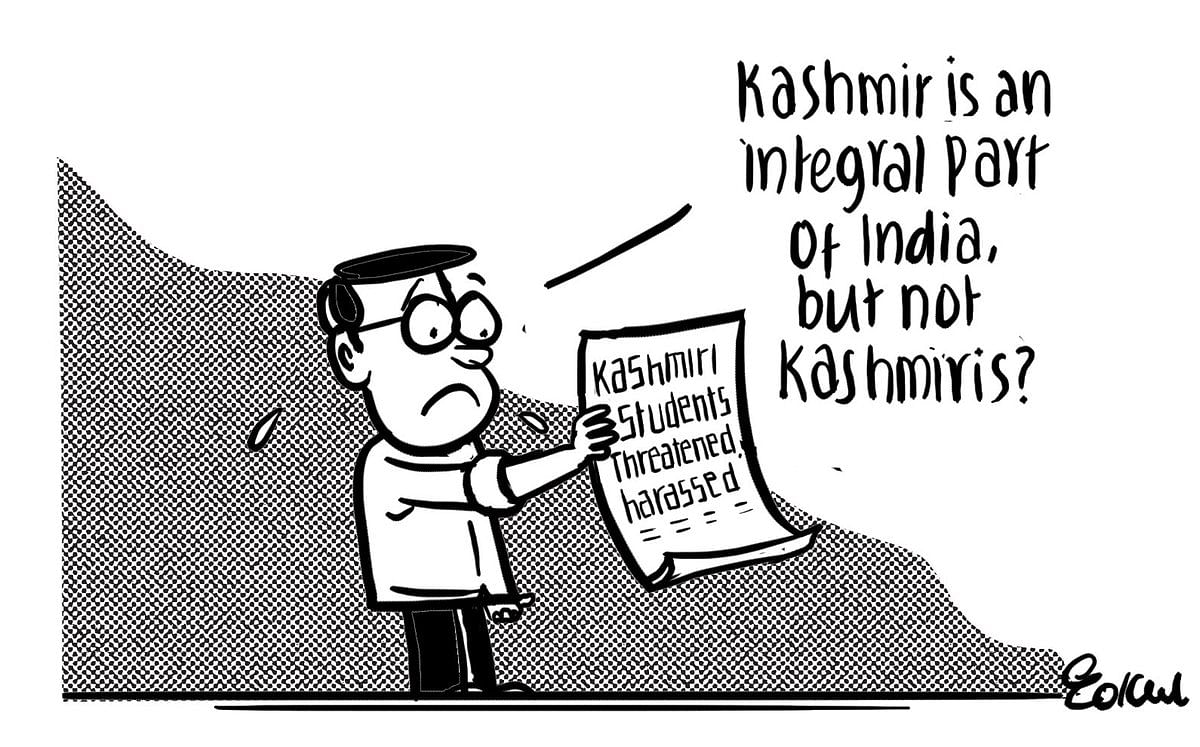
Gokul Gopalakrishnan questions Indians at large about the alleged harassment of Kashmiri students in Dehradun and other parts of the country following the Pulwama tragedy.
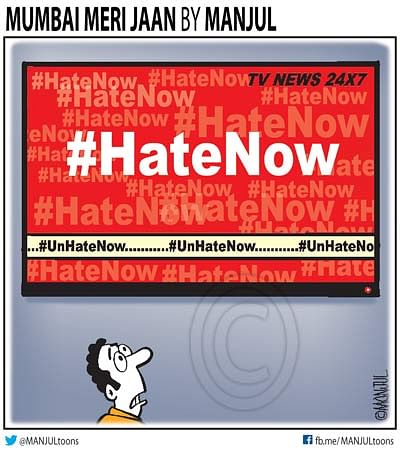
Manjul takes a thinly-veiled dig at India’s ‘commando comic’ TV channels, which have been baying for blood and mongering hate after the Pulwama attack, but simultaneously run anti-hate hashtags.
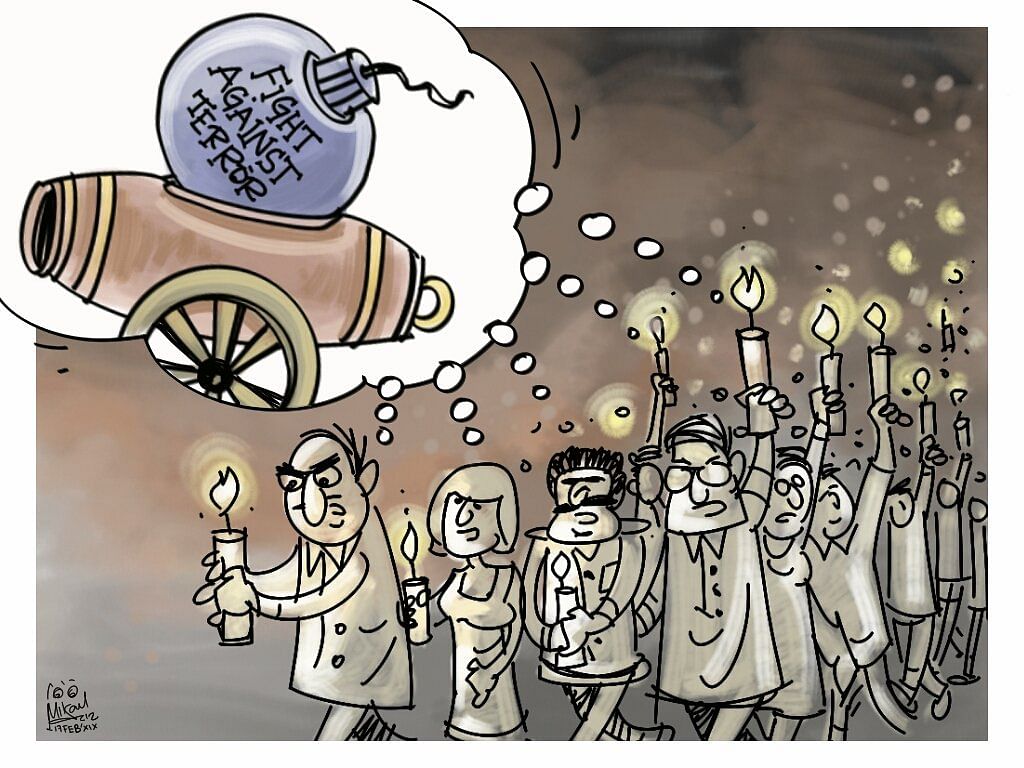
Thousands of people all over India conducted candle-light vigils to express their solidarity with the CRPF personnel who were killed in Pulwama. However, Mika Aziz shows that the people taking part in these peaceful marches also have revenge on their minds, and are thinking of lighting cannons with their candles.
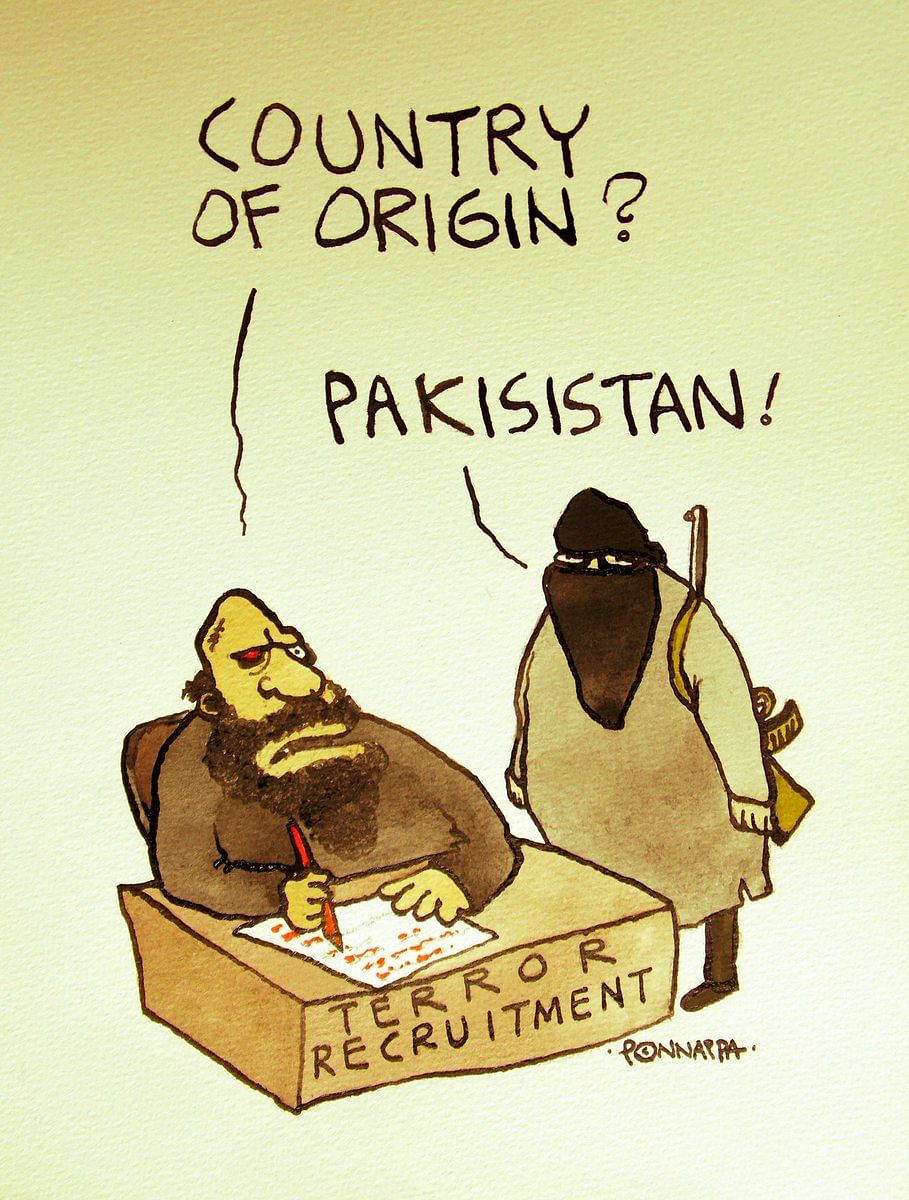
Nala Ponnappa depicts the ISIS-isation of Pakistani terror groups. The Pulwama attack, for example, was reminiscent of the ISIS’s lone-wolf attacks and barbarism.

From within the ‘Situation Room’ where a response to the Pulwama attack is probably being discussed, Sajith Kumar depicts a voice summoning the team of the film Uri (based on the surgical strikes of 2016) for ‘creative inputs’ about how India should respond.
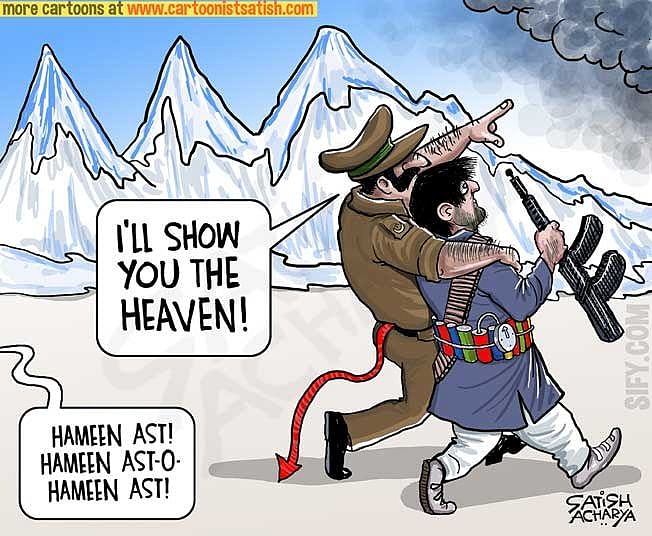
Satish Acharya depicts the devil in Pakistani army luring Kashmiri youth to attain heaven via the path of terror. The irony is that Amir Khusro had written of Kashmir
Gar firdaus bar rue zameen ast
Hameen asto, hameen asto, hameen ast
or
If there is paradise anywhere on earth
It is here, it is here, it is here.
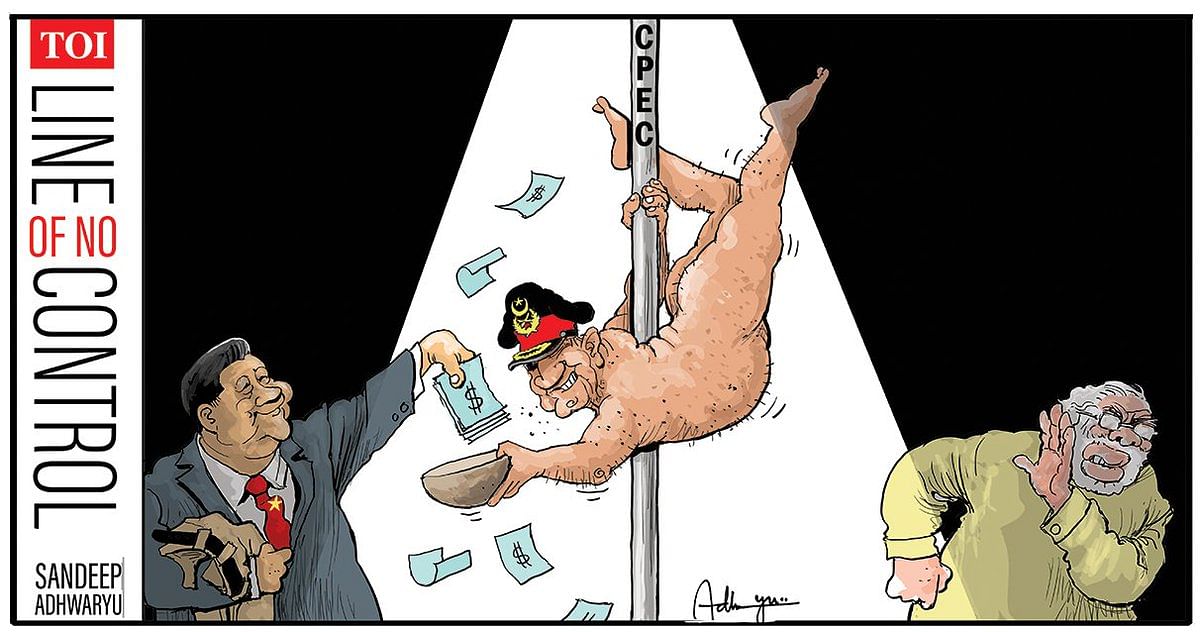
Sandeep Adhwaryu depicts a Pakistan Army general pole-dancing to get money from China, while Indian PM Narendra Modi gets an eyeful.



